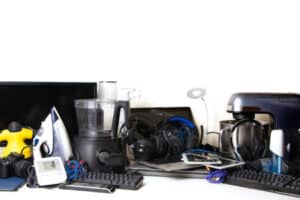Electrical and electronic waste are real problems for the planet. Their recycling is very rare and manufacturers and users do not always have the reflex to reconvert these devices. In recent years, Canadian standards have imposed measures on the latter to encourage them to convert these equipments that constitute WEEE or D3E. It is in this context that several companies have emerged to support producers and owners of electronic devices in the conversion of this equipment. Info liquidation Recycle is one of the most efficient structures in this field. For this purpose, it will you the sorting steps to succeed in computer recycling.
The first phase: the ecodesign of WEE
All electrical or electronic equipment has a life cycle. Thus, they are destined to become waste, regardless of the number of years of life. For this reason, the makers of these devices must project this end into the way they manufacture the devices. Electronic recycling therefore begins with the design of the equipment and producers must integrate into the manufacturing stages, measures to anticipate their ends. This is what we call ecodesign. It is a question of considering the environmental impact of the product during its manufacture. This allows, of course, to reduce the environmental impacts of articles from the beginning to the end of their life cycle.
The second phase: separate collection

The world is totally dependent on this electronic equipment that is totally integrated into our daily lives. It is therefore impossible to stop manufacturing them and therefore, impossible to produce electronic waste. This is why the second phase of sorting is selective collection. The waste is assembled by category and collected for reuse. For small electronic waste products produced by individuals and associates of an organization, containers are generally used. WEEE is deposited there, which prevents the destruction of electronic equipment and therefore allows its recycling. For this purpose, we provide you with completely free pick-up services for your computer equipment.
The third phase: the automatic treatment of hazardous constituents and toxic substances
Electrical waste is often composed of products that are harmful to both humans and nature. Mercury, chromium, nickel and cadmium are just a few examples of hazardous substances contained in WEEE. In reality, we can not do without these products in the manufacture of electrical equipment especially the batteries of devices. The collection of this waste is therefore a way to prevent the spread of these toxins in the environment. In addition, this operation prevents burning the products. Once collected, they are systematically treated professionally by experts and reused.
The fourth phase: the reuse of electrical waste
The next step after the treatment of hazardous constituents is the reuse of waste. All items that can be used are recovered for reuse. Indeed, electronic equipment is usually left when it becomes obsolete or loses its primary function. Thus, it is not uncommon to throw away your computer when the device no longer works. However, this equipment can still be used and is sometimes even in perfect condition. This is the case for aging laptops or unused landline phones. Once you think they will no longer serve you, other entities or individuals can use them for other purposes. Info Liquidation Recycle also follows you in this step for a reuse of WEEE. We give you the procedures for recovering this equipment.
The fifth phase: recycling
After collecting the waste, some is reused and items that cannot be used are recycled. For this purpose, approved companies recover these products. Our company is in a better position to help you find recyclable materials in WEEE. These residues are classified by waste category and sent to specialized treatment homes. Do not hesitate to contact us so that we can help you choose your materials to recycle.
The sixth phase: the valorization of the D3E

This is the last stage during which the waste is dislocated and each component recovered. Thus, at this level, there are:
- dismantling;
- grinding;
- electromagnetic separation;
- optical classification;
- the separation of plastics and metals without iron.
These different phases make it possible to isolate each constituent in order to use them to manufacture other products. These materials can indeed be used to produce other elements.
In short, contact Info Liquidation Recycle. We put at your disposal professionals able to accompany you throughout this sorting process.


Comments